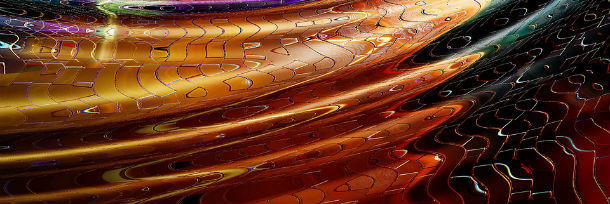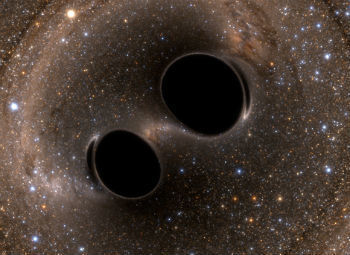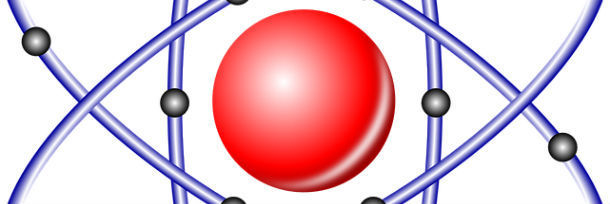

Throw a stone into a pond, and the water ripples. Smash two black holes together at half the speed of light, and existence ripples. They collide so hard that you don't need to hear anything, because space itself is screaming and shaking up and down in a detectable way. But you've got to expect something amazing when 60 octillion tons of spherical singularities slam together like Galactus twerking. Einstein predicted these "gravitational waves" over a century ago, and their banging is so hard that reality is jolted.
Smashing spacetime so powerfully that it wobbles like an old VCR tape sounds like a fresh, steaming plate of hyperbole. But we've already detected it. Two singularities slammed into each other like the ultimate subwoofer, blasting bass notes through the fabric of reality. Three entire solar masses were converted into gravitational wave energy -- a process over 50 times more powerful than the entire visible universe. It was so spacetime-staggering that we felt the effects over a billion light years away. On September 14, 2015, every cell in your body was gently squeezed by black holes getting it on.

Spacetime so kinky, it's got holes going into other holes.
The measurement was made by LIGO, the Laser Interferometer Gravitational-Wave Observatory -- aka the most impressive anything on the surface of this or any other planet. It's a pair of set-squares for spacetime, two vast L-shaped installations four kilometers long on each arm, and every micrometer is in an ultrahigh vacuum. And they're on opposite sides of the country, so that they can use almost the entire North American continent as a 10-millisecond timing delay. In each, LIGO lasers bounce back and forth between mirrors more carefully isolated than Kanye West's sense of humor. The result is a ruler so accurate that when its reading varies, it's the universe that changed.
Detecting gravitational waves is so staggering that even working out the idea that it would one day be possible earned someone the 1993 Nobel Prize for Physics. And now we've done it. This is the metrological Moon landing. Oh, and then we detected some more a few weeks ago. Because that's science -- "the most impressive and amazing thing we've ever done as a species" quickly becomes "something we can do, so let's do it more. Then see what comes next." Wooo!

Antimatter is utterly ridiculous: the evil opposite of matter which annihilates it on contact, with spectacular explosions. Did this stuff escape from a Star Trek episode, and do the anti-bosons have little evil beards and eye patches? The thing is, we've not only detected antimatter, but we can also now churn it out of particle accelerators and hold it in magnetic bottles for 15 minutes. Labs can hold antimatter longer than I can hold a pint.

When these collide with me, I also get annihilated.
Antimatter's most famous application is annihilating matter to release 90 million billion times as much energy (c-squared is a hell of an exchange rate). This spectacular factor might be because antimatter annihilation is everyone losing at a game of time-travel chicken. The Feynman-Stueckelberg interpretation treats antimatter as matter going backwards in time. So when it hits regular matter going forward, it's not just two objects touching; it's a head-on collision in the fourth dimension. It's only one of several ideas, but it's the one most likely to make The Doctor finally install seat belts on the TARDIS.
The best bit about this idea is that it already works in the equations. Antimatter inverts all kinds of important quantities, but instead of inventing a new mode of matter, you get the same effect by multiplying time by -1. After all of our science-fiction and magical fantasies, it turns out the real time traveler was inside our state-of-the-art particle accelerators all along. Though, uh, that's probably where we would have expected to find them. When you tell Doc Brown, break it to him gently.

Original article and pictures take http://www.cracked.com/blog/5-incredible-theories-thatll-give-your-brain-science-boners/ site
Комментариев нет:
Отправить комментарий